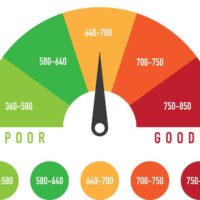Personal Guarantees On Loans

Suppose a borrower opts for a guaranteed loan. In that case, the lender has to provide a guaranty which includes ownership of the property at risk of default if the lender is unable to pay off the debt or the borrower goes bankrupt. In a typical guaranteed loan scenario, the property, which is likely to be a house, car or land, is offered at a premium. The home is offered at, say, three times the loan value, which means that if the borrower defaults, he has to repay the entire sum with interest.
Hence, the total cost of the guaranteed loan is very high since the borrower is under extreme financial pressure, pays high interest, and also risks losing his home. The possible reduction in the guaranteed loan value, therefore, represents a high financial cost to the borrower. However, it is seen that guaranteed loans represent a high risk to lenders, as they get paid off if the borrower goes bankrupt in most cases. Hence, the higher cost goes for lenders too. As such, they are willing to get insurance to cover the risk as this can be profitable to them. Moreover, such a loan is good for lenders, where the borrower pays lower interest and can be cleared very quickly. As such, many lenders do not mind providing a loan if the borrower provides him such a loan as long as he has this insurance to protect the lender.
Term of the loan
Generally, the longer the term of the guaranteed loan, the more costly it is. It is seen that even a short-term loan can be risky for the lender, as he has a high risk of not getting back the full loan amount. Hence, in most cases, it is seen that the guaranteed loans are provided for very short terms and are usually repayable within a month or a year at most. Thus, the interest rate for these loans is usually very high. However, if the borrower’s financial situation improves, he can again avail of the loan for a longer duration without incurring costs and interest as originally.
Overhead of the loan
Most lenders fear that guaranteed loans become expensive, as the lender has to manage a large amount of paperwork and other financial work as well. Such work involves employees’ reviews, appraisement, valuations, independent third-party inspections, etc. on the borrowers’ property. These office operations can take some time, and the cost to the lender can be high as well, as he has to spend on the personnel, and the banks provide him cash on their proposal. The lender can charge an extra fee, too, to cover all the work.
The extra paperwork ensures that the loan is safe for the lender. The lenders are then allowed to provide loans quickly to the borrowers. However, this extra time does not come free in most cases, and on the other hand, the borrower has to pay some fee, too, as a lending fee.
Period of the loan
The maturity of the guaranteed loan is generally within the period of the borrower’s next wage or tenancy payment. The guaranteed loan period is at most three years. There are many lenders who normally provide the loan for one to three years and end it at that period.
Normally, the installments are repayable by the borrower for only three years and hence it is seen that the loan has been repaid earlier than usual. This is in most cases due to the higher cost of the house in a short time. This is not the only cause; there are several other scenarios leading to the repayment of the loan faster. This is also not the comparison between two annual installments that have the same period; there are several reasons as well, as the APR is between 2 years and ten years.
However, it should be clear that a guaranteed loan has no prepayment penalty. If the borrower wants to repay the loan earlier than the stipulated date, the loan can be automatically repaid till the stipulated date. However, if at some point the borrower wants to repay the loan earlier than the date of interest payment, he has to pay the penalty, however heavy it may be for him.
The implications
As the borrowed finance cannot be called ‘free’, nor can it be called ‘unlimited’. The benefits and the risks are seen clearly from the description of the loan type. Now, what complicates the task is the selection of the lender. Firstly, it should be at least a bank, a large bank preferably. Secondly, it should be a lending body that is known for taking worthwhile steps toward providing the loan. Last but not least, it should be an institution well situated to provide the loan in a feasible way, which is having a favorable background and a strong credit record. The same should give ample reasons for why the bank should be considered.
At the same time, each institution offers different features to the ordinarily strict complied through waivers on the interest payments for a few months or a year in quick repayment.







